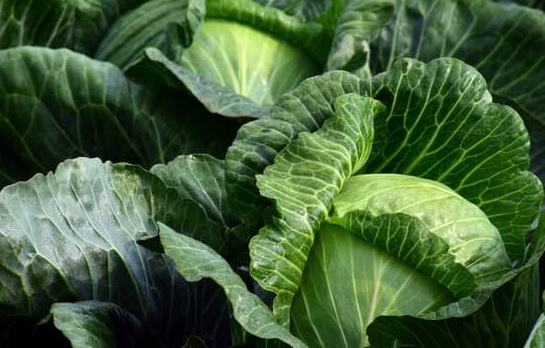Cabbage Farming – Planting, Growing, and Harvesting Cabbage: The cabbage is a delicious vegetable that is used to prepare salads among other foods. It is a vegetable that is grown in many countries across the world.
But
How is cabbage grown?
In this cabbage growing guide, you will find instructions on how to plant and grow the cabbage.
Cabbage Farming
Cabbage Farming is not a difficult venture; anyone can get into farming and grow them. All you need to know is the steps of growing them.
If you are a beginner gardener, growing cabbage may prove to be a challenge until you master the art. You will also need to rotate the crop from time to time to avoid build-up of some diseases.
Follow this cabbage farming guide to plant a successful crop.
Cabbage Planting
The cabbage is known to use a lot of nutrients from the soil, that’s why you need to prepare your garden before planting.
Prepare the soil by mixing manure or well-prepared compost. Ensure that the soil is well-drained because roots that stand in water cause the heads to rot or split.
If you are planting the seeds indoors, you need to sow them ¼ inch deep for about six to eight weeks.
Harden off the plants the week that you want to start planting the seedlings outdoors.
Plant the seedlings in rows of 12 to 24 inches apart, depending on the desired size of the head. Your spacing will determine the size of the heads. The closer they are, the smaller the heads will be.
Plan your calendar and plant at the best time of the year. Plant them when it’s not too hot and dry. Too much heat will make your young plants to dry.
Check out this video to learn how to plant cabbages.
How to Care for Cabbages – How to Grow Cabbages

When the seedlings are five inches tall, you will be required to thin to ensure there is enough space between the cabbages. If there are those that are too close to each other, transplant them to somewhere else.
Mulch around the crops to retain the soil moisture as well as to regulate the soil temperature.
After two weeks of transplanting, you can fertilize them with a balanced fertilizer.
In the early stages, cabbages require nitrogen; you can add nitrogen-rich fertilizer.
How to Harvest Cabbages
When the cabbage reaches the desired size and its firm you can harvest. The mature heads will tend to split. For most cabbages, it takes around seventy days to Grow.
To harvest the cabbage, cut each cabbage heat at the base using a sharp knife or something you are comfortable to cut with.
As you cut the cabbages, remove any yellow leaves and retain the green loose leaves. Place the cabbages in a shade.
If you want to get tow crops, remove the cabbage head out of the plant and leave the outer leaves and roots in the soil. The plant will reproduce new heads.
When you have completed your harvest, remove the entire plant, root, and stem from the soil to prevent any spread of diseases on the next planting.
How to Store Cabbages
After harvest, you will need to store the cabbages if you are not selling them immediately. Store cabbage in a cold and moist place.
If a cold and moist storage place is a challenge to create, you can use a refrigerator to provide the cold. An alternative option to refrigerator storage is a garden storage mound, pit, or a root cellar.
Cabbage that is stored in the refrigerator can stay fresh for three to four weeks when wrapped lightly in a perforated plastic bag.
If you are storing in the root caller, do not remove any part, store it with the head, and plant heads. Place the heads in rows on shelves several inches from each other. You can also hang the cabbage heads down using a string from the ceiling. You can also wrap them in several layers of newspapers while place on the floor.
To store them in a garden pit or mound, create a cabbage storage pit in the garden. Dig a hole 2 or 2½ feet deep. Line it with a heavy layer of straw to ensure it is well insulated. Store the roots of the cabbage up and the heads facing down. Cover it with more straw. Ensure that you can easily access the cabbage when you need it.
Do not wash the cabbage or remove the outer leaves when you want to store the cabbage. Solid heads picked with outside wrapping leaves store the best. Handle heads with care to prevent bruising.
Types of Cabbages
The cabbages come in a range of shapes, sizes, and colors. Find some of the different cabbage types below:
- Green Cabbage
- Savoy Cabbage
- Red Cabbage
- Napa Cabbage
How long does it take for cabbages to Grow
A cabbage takes 80 to 180 days to harvest from seed and 60 to 105 days from transplant depending on the variety of cabbage.
How to Grow Cabbage | Cabbage Farming and Cabbage Harvesting Video

Steve George is Blogger, a marketer and content writer. He has B.A. in Economics from the University of Washington. Read more about Mzuri Mag.
